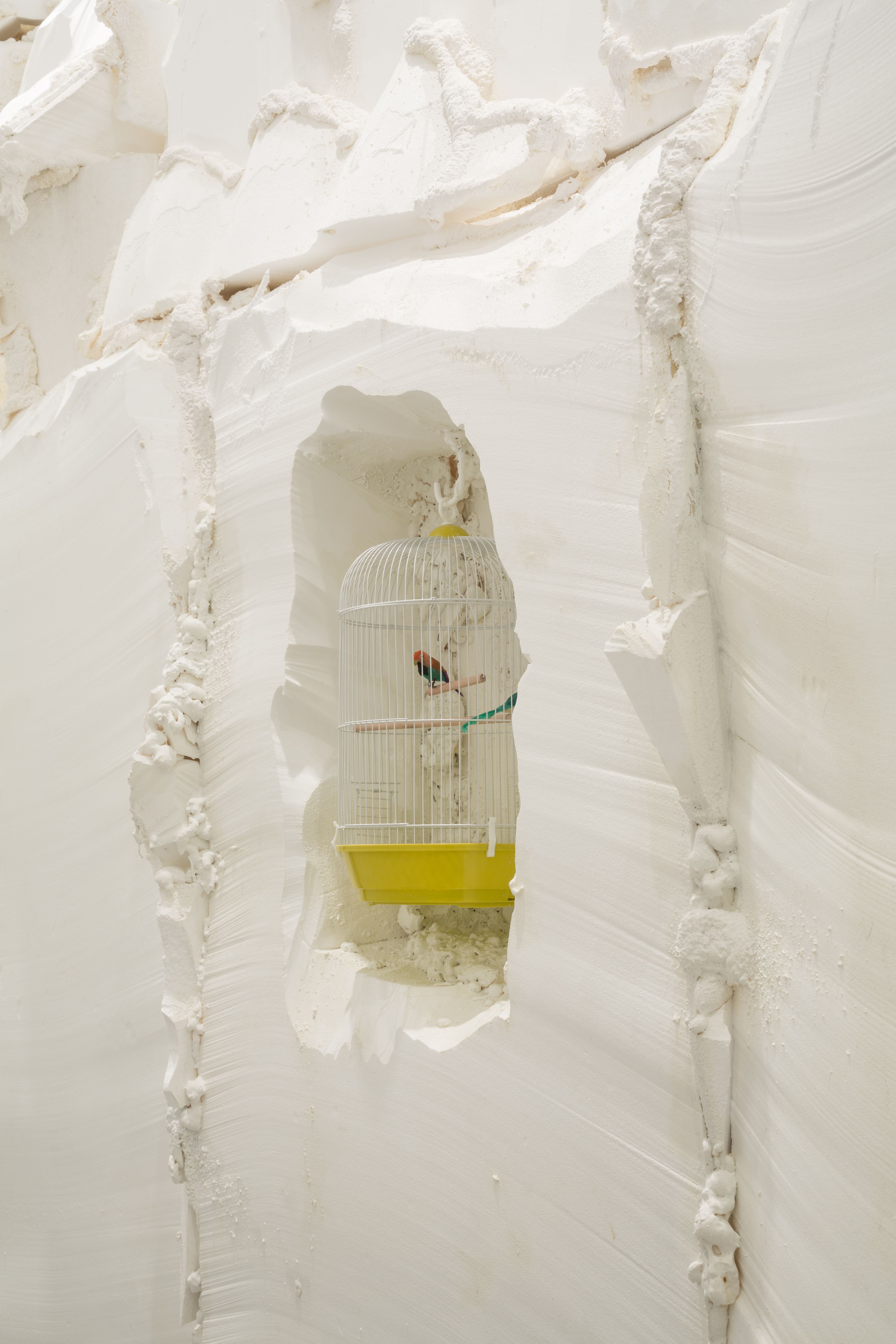On Sabina Ott’s Social Practice
December 19, 2017

This piece appears in the LARB Print Quarterly Journal: No. 16, Art
To receive the LARB Quarterly Journal, become a member or donate here.
¤
In the mid-1990s, Sabina Ott experimented with transporting elements of her colorful, bold, and layered non-narrative paintings away from the canvas and into the room. Swaths of color escaped from the paintings to wrap themselves around walls and onto carpeted floors; details of images were incrementally expanded and then rendered as wood-relief architectural models. Inspired by Gertrude Stein’s deliberately skewed reinvention of syntax, installations like 2001 Everywhere There is Somewhere (Suddenly Green Became Blue) and What’s here is everywhere (2003–2004) enacted a controlled and delirious state of confusion whereby color, shape, and emotion become newly clear. As Ott described her process, “The syntaxes switch, everything is thrown up in the air and falls down, and then you can experience it again in a fresh way.”
Ott’s multimedia work was always social and celebratory, but after moving to Chicago from California in 2005, she began making public art projects. Her CTA Window, commissioned by the Chicago Transit Authority Commission, is a stained-glass mural in which puffy gray cloudbanks soar above freeways; the mural itself is installed alongside a window that looks out on the changeable sky. In 2011, she founded Terrain — an innovative, ambitious curatorial project in which she and her partner John Paulett transformed their green-shingled house in Oak Park into a gallery. Artists at all stages of their careers have been invited to install original, site-specific work on their front porch and postage-stamp yard.
Simple, open, and democratic, Terrain projects explore the divide between public and private, decoration and function, figure and ground. At the same time, they’re a gift to the neighborhood, offering children and adults a chance to experience challenging contemporary art without visiting a museum or gallery. Over the years, Ott’s concept has spread far beyond her front yard, with Terrain Biennials being held this fall in California, Indiana, Arizona, Sweden, and France.
By 2014, Ott’s highly painterly work no longer entailed making actual paintings. She began working with Styrofoam. Her massive installation at the Chicago Cultural Center, here and there pink melon joy, spread over three large, windowed rooms mobilized her occupation with queasy, saccharine colors and synthetic textures into an epic funhouse journey through purgatory, heaven, and hell. Massive blocks of carved icehouse Styrofoam rest on AstroTurf clouds. The effect is profound. “This dream is no escape from reality,” Jason Foumberg wrote for Artforum. “Ott builds the type of world she wants us to live in.” Her pastel-drenched kitsch materials transcend themselves in sculptures that evoke suffering and pleasure, ecstasy, pleasure, fear, and mortality.
Her most recent full-scale installation, who cares for the sky?, featured an 8,000-cubic-foot mountain that could be scaled on a series of stairs or burrowed into via a treasure-filled underground tunnel. Inspired by Gertrude Stein’s children’s book, the project became a lopsided monument to innocence, persistence, and wonder. In the spirit of her work with Terrain, Ott invited 70 artists to contribute a small, personal work to be hung in the tunnel. She received a mixed batch of things from a mixed batch of artists, and it was not always clear which pieces were the work of professionals. As she observed,
There’s something that happens when you abstract a single piece from a body of work that renders it talismanic. […] I’ve always believed that my artworks offer a place where trauma can be transformed into something else by turning things inside out and dislodging them into a space of pure play. When I made paintings, I was experiencing that kind of play by myself and it was very personal. But here, in these spaces, it’s very public. […] Someone who came to the show compared it to writing a poem: You begin, but don’t know how it’s going to end. The mountain has an illusion of solidity, but it feels very temporary to me, perhaps even still growing, and in a way, that’s a beautiful thing.
[gallery size="full" ids="253776,253970,253777,253971,253972,253969,253974,253975"]
LARB Staff Recommendations
The Life, Death, and Afterlife of Kathy Acker
Matias Viegener talks to Chris Kraus about her new book, "After Kathy Acker."
Please Be Nice to Me: Navigating History, Mystery, and Desire in Chris Kraus’s “After Kathy Acker”
In the first authorized biography of Kathy Acker, Chris Kraus digs beneath the myths around the avant-garde heroine.
Did you know LARB is a reader-supported nonprofit?
LARB publishes daily without a paywall as part of our mission to make rigorous, incisive, and engaging writing on every aspect of literature, culture, and the arts freely accessible to the public. Help us continue this work with your tax-deductible donation today!